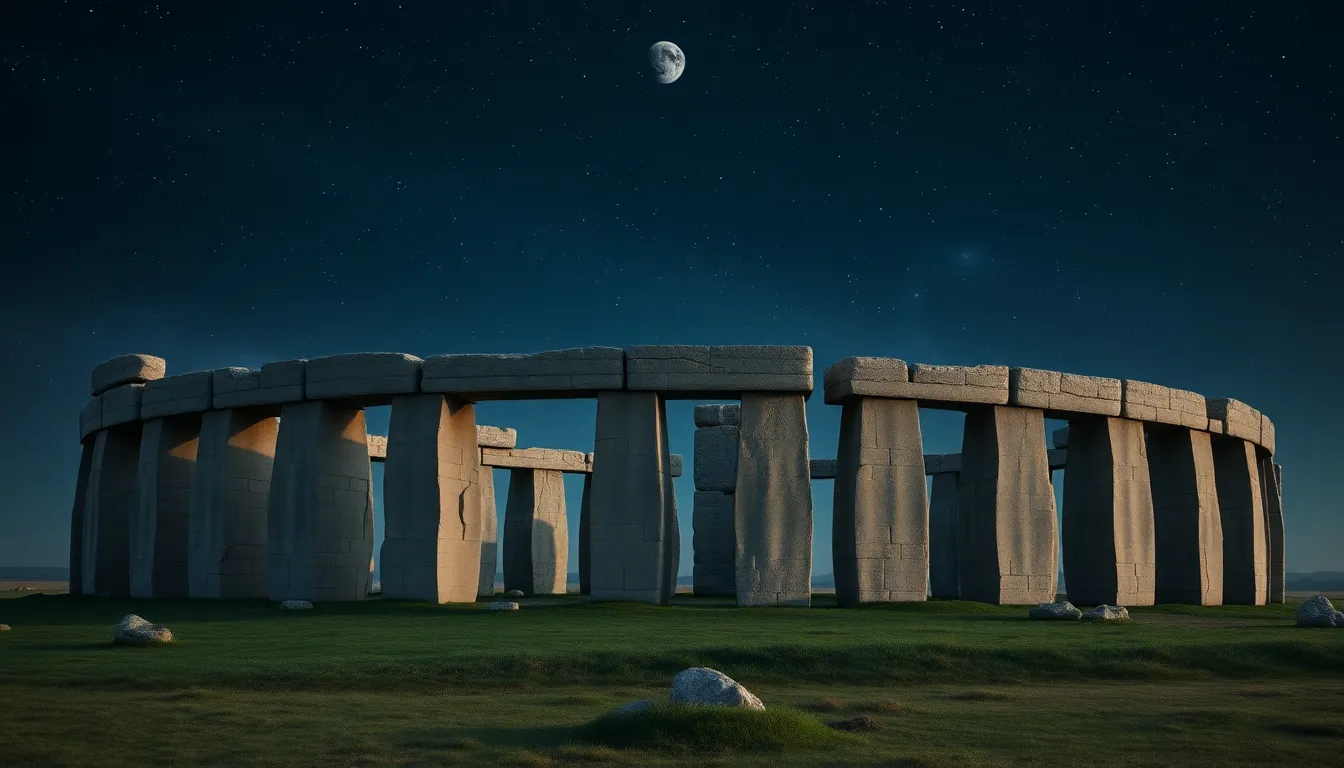From Stonehenge to Delphi: The Sacred Places That Shaped Civilization
Introduction: The Significance of Sacred Spaces in Human History
Sacred spaces have played a pivotal role in human history, serving as sites of worship, community gathering, and cultural expression. These places not only reflect the religious beliefs of their time but also embody the artistic, architectural, and social achievements of civilizations. Throughout history, sacred sites like Stonehenge, Delphi, and others have influenced cultural practices, political systems, and even the collective consciousness of societies. This article explores some of these remarkable places, shedding light on their significance and the legacies they have left behind.
Stonehenge: An Enigmatic Megalithic Marvel
Stonehenge, located on the Salisbury Plain in England, is one of the most iconic prehistoric monuments in the world. This megalithic structure comprises a ring of standing stones, each around 13 feet high and weighing approximately 25 tons. The architectural ingenuity displayed in its construction raises many questions about the people who built it over 4,500 years ago.
Several theories attempt to explain the purpose of Stonehenge:
- Astronomical Observatory: Some researchers suggest that Stonehenge was used to track celestial events, such as solstices and equinoxes.
- Burial Site: Archaeological evidence indicates that the area surrounding Stonehenge was used for burials, suggesting a connection to the afterlife.
- Ritual Center: Stonehenge may have served as a place for rituals and gatherings, fostering community bonds among Neolithic peoples.
The cultural impact of Stonehenge on Neolithic society is profound, as it represents a significant advancement in engineering and community organization. Its legacy continues today, inspiring countless visitors and researchers who seek to unravel its mysteries.
Delphi: The Oracle of Apollo and Its Influence on Ancient Greece
Delphi was considered the center of the world in ancient Greek mythology, home to the Oracle of Apollo. This sacred site, nestled on the slopes of Mount Parnassus, was a major religious sanctuary and a place of pilgrimage for the Greeks. The historical significance of Delphi is heightened by its role as a site where the Pythia, a priestess, delivered cryptic prophecies that guided political and social decisions.
The Oracle’s influence was immense:
- City-states would consult the Oracle before embarking on wars or establishing colonies.
- Delphi hosted the Pythian Games, a major athletic festival akin to the Olympic Games.
- The site was a cultural hub, fostering a sense of identity and unity among the Greek city-states.
Delphi’s cultural significance lies not only in its religious practices but also in its contribution to Greek identity, mythology, and philosophy. It remains a symbol of wisdom and insight in Western thought.
Machu Picchu: The Sacred Incan Citadel
Perched high in the Andes Mountains of Peru, Machu Picchu is one of the most celebrated archaeological sites in the world. Built in the 15th century during the reign of the Inca emperor Pachacuti, this ancient citadel showcases the remarkable architectural abilities of the Inca civilization.
Machu Picchu holds significant religious importance within Inca cosmology:
- It is believed to have been a royal estate or a religious retreat dedicated to the worship of the sun god, Inti.
- The site’s layout and orientation align with astronomical events, indicating its role in Inca rituals.
- Machu Picchu represents the Inca’s deep connection to nature and their understanding of the cosmos.
The rediscovery of Machu Picchu in 1911 by Hiram Bingham sparked global interest in Inca culture and history. Today, it stands as a testament to Inca ingenuity and spirituality, attracting millions of visitors each year.
Jerusalem: A City of Sacred Significance
Jerusalem is a city of profound importance in Judaism, Christianity, and Islam, making it one of the most contested and revered places on Earth. Its historical context is rich, with a lineage that dates back thousands of years.
Key religious sites in Jerusalem include:
- The Western Wall: A remnant of the Second Temple, it is the holiest site in Judaism, where prayers and rituals are performed.
- Church of the Holy Sepulchre: Revered by Christians, it is believed to be the site of Jesus’ crucifixion and burial.
- Al-Aqsa Mosque: The third holiest site in Islam, it is located on the Temple Mount and holds great significance for Muslims worldwide.
The ongoing influence of Jerusalem on geopolitics and interfaith relations underscores the city’s complex history. It serves as both a symbol of faith and a focal point for conflict, representing the deep-seated connections that different cultures have to this sacred space.
Chichen Itza: The Heart of the Mayan Civilization
Chichen Itza, located in Mexico’s Yucatan Peninsula, is one of the most important archaeological sites of the Maya civilization. This UNESCO World Heritage Site is renowned for its impressive architectural structures, such as El Castillo, a step pyramid that dominates the landscape.
The significance of Chichen Itza extends beyond its architectural wonders:
- It served as a major political and economic center for the Maya, influencing trade and cultural exchange.
- Religious practices at Chichen Itza included rituals related to agriculture, astronomy, and the worship of deities.
- The site is also famed for its astronomical alignments, showcasing the Maya’s advanced understanding of celestial cycles.
Today, Chichen Itza is a symbol of Mayan heritage and is a popular tourist destination, drawing visitors who seek to connect with the ancient civilization and its enduring legacy.
The Pyramids of Giza: Tombs of the Pharaohs and Spiritual Symbols
The Pyramids of Giza, particularly the Great Pyramid, are among the most iconic symbols of ancient Egypt. Constructed over 4,500 years ago, these monumental tombs were built for the pharaohs and serve as a testament to their power and religious beliefs.
Key aspects of the pyramids include:
- Construction: The Great Pyramid is an architectural marvel, originally standing at 481 feet tall, made from millions of limestone blocks.
- Religious Significance: The pyramids were designed to facilitate the pharaoh’s journey to the afterlife, reflecting the ancient Egyptians’ beliefs in immortality.
- Cultural Impact: These structures have influenced countless generations, inspiring awe and fascination in both ancient and modern societies.
The Pyramids of Giza stand as a lasting symbol of human achievement and the spiritual aspirations of ancient Egyptians, continuing to captivate the imagination of people around the world.
Angkor Wat: A Testament to Khmer Architectural Genius
Angkor Wat, located in Cambodia, is the largest religious monument in the world and a masterpiece of Khmer architecture. Originally constructed as a Hindu temple dedicated to the god Vishnu, it later transitioned into a Buddhist temple, reflecting the region’s evolving religious landscape.
Key features of Angkor Wat include:
- Architectural Significance: The temple complex is renowned for its intricate carvings, vast scale, and alignment with celestial bodies.
- Religious Transformation: The shift from Hinduism to Buddhism at Angkor Wat illustrates the dynamic nature of religious beliefs in Southeast Asia.
- Cultural Identity: Angkor Wat remains a symbol of Cambodian heritage and national pride, playing a crucial role in the country’s cultural identity.
Today, Angkor Wat is not only a UNESCO World Heritage Site but also a source of inspiration and reverence for millions, drawing visitors from around the globe to witness its beauty and historical significance.
The Role of Sacred Places in Contemporary Society
Sacred places continue to hold immense significance in contemporary society. They serve as sites of pilgrimage, reflection, and community gathering. Furthermore, they play a crucial role in preserving cultural heritage and fostering interfaith dialogue.
In an increasingly globalized world, sacred spaces remind us of our shared humanity and the diverse beliefs that shape our collective experiences. They encourage us to explore our spiritual and cultural identities while promoting respect and understanding among different faiths.
As we reflect on these remarkable sites, we recognize their enduring influence on civilization and their power to inspire future generations.




